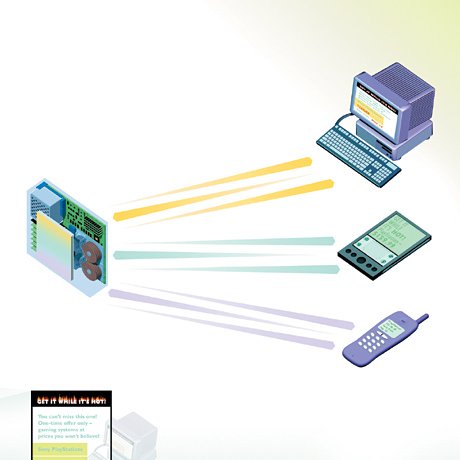
When many people use the word "Internet," they are really talking about the World Wide Web. The Web is the most interesting, most innovative, most visible, and fastest growing part of the Internet. To a great degree, the explosive growth of the Web has been what has fueled the enormous amount of interest in the Internet. When people refer to "surfing the Net," they're usually talking about using the World Wide Web.
This section of the book looks in great detail at how the World Wide Web works, rom such basic technologies as how web pages work to more advanced features, such as using grid computing to harness and combine the power of hundreds of disparate computers connected to the Internet. You'll learn what the Web is composed of and how a web browser works and thoroughly investigate URLs (uniform resource locators), as well as many other aspects of the Web and web browsers.
Chapter 17, "How Web Pages Work," examines the most basic part of the Web. It starts by covering the general technology of the Web and describes how the Web works. Web pages are, in essence, multimedia publications that can include music, audio, video, and animation, as well as graphics and text. Web pages are connected via hypertext that enables you to jump from any page to any other page, and to graphics, binary files, multimedia files, and other Internet resources. To jump from one page to another, or to another resource, you merely click a hypertext link.
The chapter details how all that works, and looks at the client/server model of the Web. It shows what happens behind the scenes when you type a URL into your browserhow that information gets routed properly so you visit the website that interests you. The chapter also delves into how web pages are organized on a site and how an entire website works as a unit to deliver its information to you.
Chapter 18, "How Web Browsers Work," examines browsers. Web browsers are pieces of software that interpret the language of the Web, Hypertext Markup Language (HTML), and then display those results on your computer. The chapter begins by delving into how browsers do that job.
This chapter also discusses one of the most common, and annoying, facts about the Webthe sometimes incomprehensible error messages you receive when you can't get to a website or web page. You'll see what those messages mean and understand why you can't visit a web page or site when you get one of them.
As mentioned earlier, HTML is the language of the Web. Chapter 19, "How Markup Languages Work," explains how HTML forms the building blocks for creating web pages. The language is an essential set of directions that tells your browser how to display and manage a web document. The chapter showsin detailhow all that works. It also covers how some of the newer HTML-related technologiesin particular, one called AJAXare making websites as responsive and interactive as desktop software.
Chapter 20, "How Hypertext Works," looks at hyperlinks, which set the Web apart from most other portions of the Internet. This chapter describes the various ways documents link to each other on the Web and explains concepts such as relative links and absolute links.
Chapter 21, "How URLs Work," looks in great detail at URLs, the addresses you type into your browser to visit a website. You'll look at the underlying structure of a URL and gain a better understanding of how a URL is put together and what it can tell you about the site you're visiting. You'll also see precisely how URLs help retrieve documents from the Web.
Chapter 22, "How Image Maps and Interactive Forms Work," looks at two technologies you use every day on the Web without realizing it: image maps and interactive forms. Image maps aren't maps in a traditional sense. Instead, they're graphics with URLs embedded inside them. When you click one part of the graphic, you're sent to one site, and when you click another, you're sent to a different site. An image map might be a picture of a house, for example, and when you click the living room, you're sent to an entertainment site; when you click a home office, you're sent to a business site.
Interactive forms are the forms you fill out on the Web for doing things such as registering at a site or sending information about yourself before you're allowed to download a particular piece of software free of charge.
Chapter 23, "How Web Host Servers Work," looks at web server software. As mentioned before, the Web works on a client/server model. Your web browser (the client) contacts the web server. This chapter explains how web server software interacts with your browser to deliver web content to you.
Chapter 24, "How Websites Work with Databases," looks at databases. Databases are used on the Web for many things. Web indexes and search sites such as Yahoo! are, in essence, databases that interact with the Web.
Chapter 25, "How .NET and Web Services Work," looks at one of the newer web technologiesand it's a technology that may transform the way that the Web is used, particularly by businesses. Web Services and a related technology from Microsoft, .NET, allow applications and services to be delivered remotely over the Internet, and let businesses tie together their business systems. So, for example, the technology can be used to let you run your business's internal enterprise software when you're anywhere in the world, and you'll be able to run it from your browser and use corporate resources and data you need.
Finally, Chapter 26, "How Grid Computing Works," looks at a remarkable technology that harnesses and combines the CPU power of thousands of disparate computers on the Internet and in essence create a virtual supercomputer. Grid computing has already been used to help in the search for extraterrestrial life by processing radio signals from satellites, and is also being used in medical research.